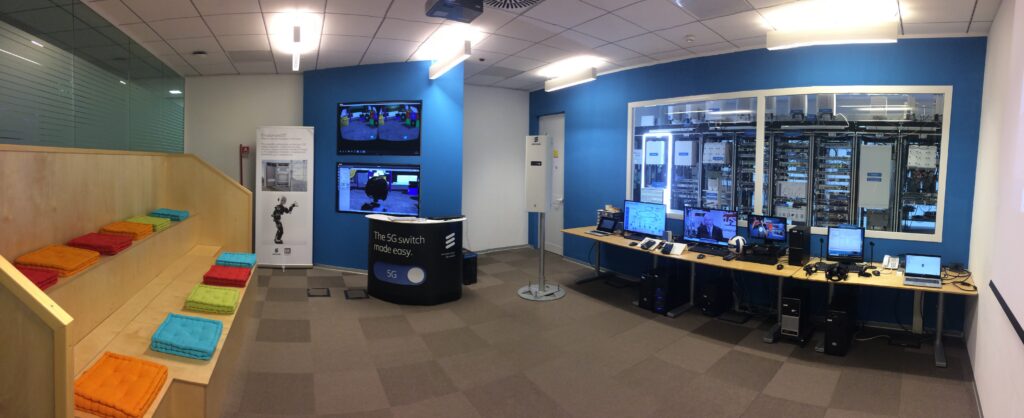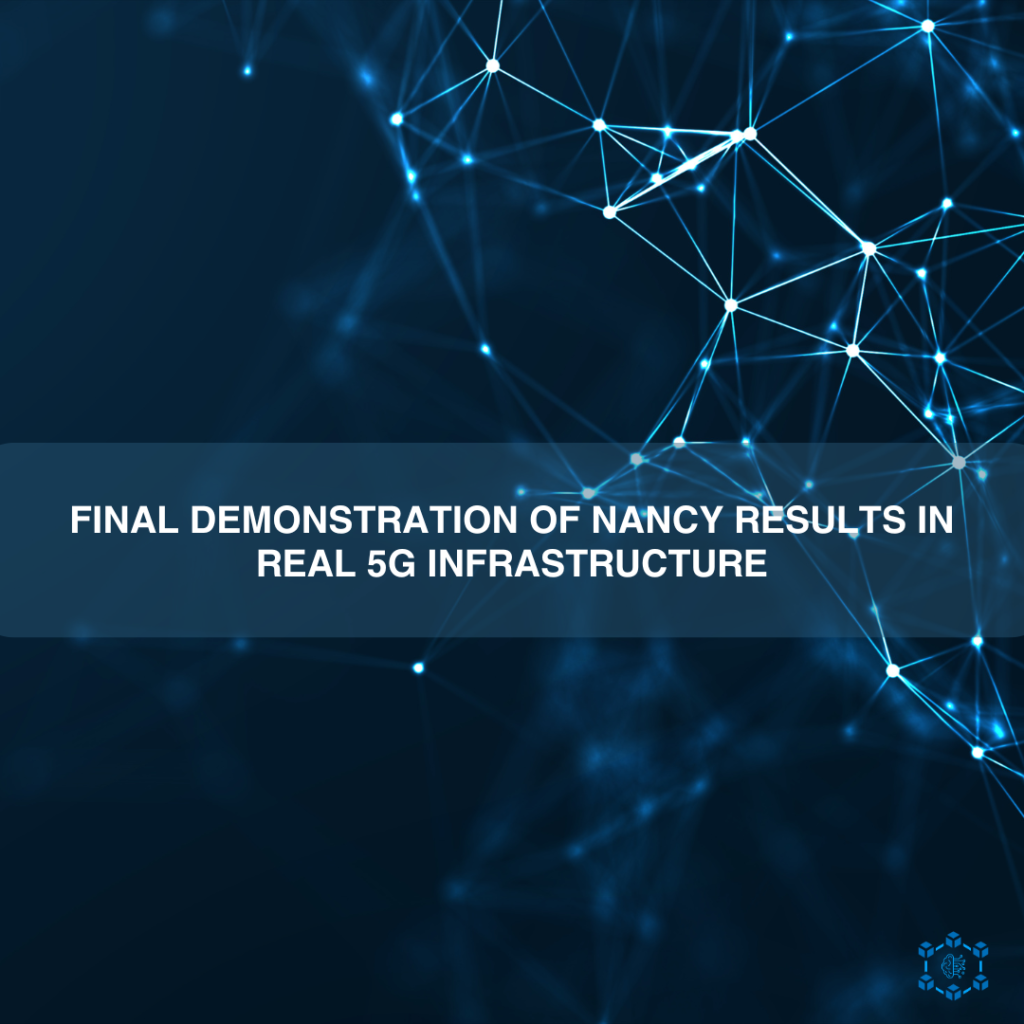Authors: Abir Yasser Barakat, Giuseppe Celozzi, Giancarlo Sacco, Marco Tambasco
Organization: Ericsson Telecomunicazioni SPA (TEI)
The evolution beyond fifth-generation (B5G) wireless networks demands an architecture that combines security, flexibility, and distributed intelligence. The NANCY project is a pioneering initiative to design and validate a secure, intelligent architecture for beyond-5G (B5G) wireless networks. A central objective is to demonstrate the seamless integration of NANCY’s advanced results within real, commercial-grade 5G infrastructure, thereby validating end-to-end performance in a controlled field environment and paving the way for industrial deployment.
Ericsson’s commercial 5G demonstrator forms the backbone of the NANCY Massive IoT testbed in Genoa, Italy. This private network, operated by Ericsson’s Italian Research and Development division, combines emulated IoT devices with a robust 5G RAN, a 5G Core Network, and edge servers running lightweight Kubernetes to enable low-latency application deployment and secure device authentication via blockchain-based mechanisms.

The Mobile Network is based on an Ericsson solution for fifth-generation mobile networks (5G), operating in Stand Alone (SA) mode, which enables the delivery of native 5G services without reliance on pre-existing LTE infrastructure. The configuration utilizes the n78 band, corresponding to the spectrum between 3.4 and 3.8 GHz, with an allocated bandwidth of 80 MHz, suitable for ensuring high transmission capacity and low latency.
The antenna is configured with 4×4 MIMO (Multiple Input Multiple Output) technology, allowing simultaneous transmission and reception over four spatial streams, significantly enhancing spectral efficiency and signal quality. The system employs a TDD (Time Division Duplex) mode, which enables time-based sharing of the radio channel between uplink and downlink, optimizing bandwidth usage in high-traffic scenarios.
This setup represents an advanced solution for the deployment of high-performance 5G networks, suitable for both urban environments and industrial or mission-critical applications.
The Massive IoT scenario in Genoa focuses on secure, large-scale IoT deployments that include mission-critical tasks. The demonstration highlights key technologies validated by NANCY: self-healing and recovery algorithms deployed at the network edge to preserve service continuity under stress; post-quantum cryptography (PQC) to secure IoT communications against future quantum threats; and blockchain-based self-sovereign identity (SSI) for decentralized device authentication and service authorization. The use case intentionally weaves together multiple NANCY components to emulate a large-scale IoT environment with emphasis on SLA compliance, low latency, high availability, and data-rate KPIs.
A cornerstone of the demonstration is the Wardrop-based self-healing mechanism. This approach dynamically optimizes resource allocation to balance network load and minimize latency, ensuring resilient performance even in the presence of anomalies or changing demand patterns. IoT devices are emulated and communicate over MQTT, adopting edge-native data exchange to support real-time responsiveness and local decision-making. Blockchain wallets enable decentralized, transparent, and secure authentication, providing verifiable identities for devices and services. PQC operations are supported by specialized hardware, delivering robust cryptographic processing with resistance to quantum adversaries and ensuring long-term data integrity.
The final demonstration validates a holistic B5G-IoT ecosystem that integrates blockchain-based identity and authorization, PQC-based security, and high-reliability edge computing. The performance indicators focus on SLA adherence, availability targets, data throughput, and security guarantees under realistic traffic. The demonstrated NANCY results illustrate how distributed intelligence and secure, decentralized trust models can operate in tandem with a commercial 5G infrastructure to deliver secure, scalable, and resilient IoT services at scale.
In summary, the demonstration performed in a real 5G infrastructure confirms that the project’s suite of technologies – blockchain- SSI, post-quantum cryptography, and self-healing and recovery driven by Wardrop optimization—can be effectively deployed in commercial-grade networks. This combination provides a pathway to secure, resilient B5G/IoT ecosystems that meet stringent performance and security requirements while remaining adaptable to evolving use cases.
We invite you to explore how these cutting-edge technologies are shaping the next generation of wireless communications and IoT ecosystems, and how they can be leveraged to unlock new business models and services by following the NANCY website, mailing list, and social network channels.





